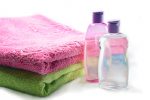
Mildew and mold can grow on anything in your house. These are common on wood, leather, wool, cotton, silk, etc. Molds flourish in warm, poorly lighted and damp areas. It can stealthily crawl on rugs and draperies in the basement, curtain showers or clothing closets. If you notice mold in any corner of your house, call Mold removal NYC for inspection. Professionals can protect you from the harmful effects of mold. Here are some tricks to prevent mildew.
Keep Everything Clean
Keep basements, dress drawers, and closets clean because mildew can grow in these spots. Keep your furniture clean because fungus gets food from the soil. It can start growing in a damp atmosphere. Greasy films on kitchen walls can also supply good to mold.
Pay Attention to Plumbing Leaks
Carefully inspect waste lines, water pipes, plumbing fixtures, and icemaker lines. These places are favorable for the growth of mold. While checking water pipes and surrounding areas, ensure a consistent flow of water. It will help you to spot mold from leaking. Water may travel in different directions, such as sideways, upward, or down. For this reason, a leak can be in the opposite direction of the mold. Carefully inspect the area, find the leak, and fix it.
If no luck, it might be best to call in the professionals to fix the problem. A quick Google search for “emergency plumber + your city” should bring back plenty of results for plumbing companies in your area. Go with a company with positive customer reviews and rock-solid warranties.
Dry Damp Areas
Mold spores can settle on different surfaces where they find sufficient moisture. These spores always present in the air, so it is difficult to escape. To avoid them, get rid of humidity as soon as possible. Moisture condensation can increase dampness of an area. If you see extra moisture, it means the targeted location needs extra insulation or repair. Immediately replace defective or cracked mortar. Gaps in the wall of basements can increase the chances of moisture. Make sure to arrange sufficient drainage.
Masonry and concrete walls need double layers of cement paint. You can tint them with mineral coloring. The waterproofed coating can seal absorbent bricks and other outer surfaces.
Remove Moisture from Air
Use dehumidifiers and air conditioners to remove moisture from the air. Fresh air has less moisture than hot air. With an appropriate air-conditioning system, you can remove moisture from the air. If your room doesn’t have air-conditioner, you can use dehumidifiers to dry the air. To stop dampness, heating is necessary for your house. Open windows and doors to expel moisture-laden air out.
Chemicals to Absorb Moisture
Molecular sieves, anhydrous calcium sulfate, activated alumina, and gel can absorb moisture from the air. You can use these chemicals to absorb moisture from your air. Buy these chemicals from a department store or drug stores.
Remove Musty Smells
Musty odors may indicate the growth of mold. These odors are noticeable in shower stalls and basements. You will need special precautions to remove musty odors to avoid damaging and objectionable mold growth. Musty odors disappear in well-dried and heated areas. In basements, you can use chlorinated lime. Sprinkle this chemical on the floor and sweep it thoroughly. For tiled walls or cement floors of bathrooms, you can use sodium hypochlorite to avoid mustiness.


